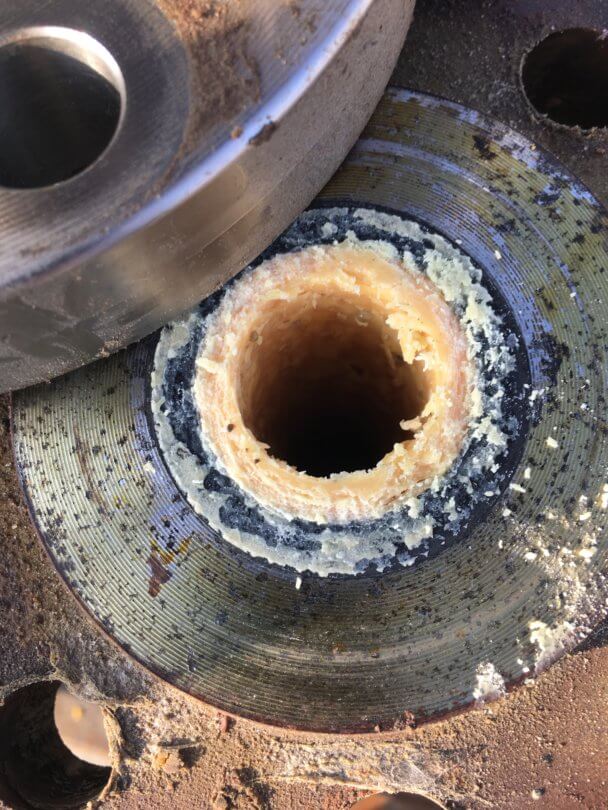Constant innovation is required to meet the needs of an evolving industry. That is why we have engineered our multiphase flow meters to be on the cutting edge of flow measurement technology. That’s also why we are always working on updating and improving our software capabilities. Roxar Rapid Adaptive Measurement™ for the Roxar™ 2600 Multiphase Flow Meter is our latest breakthrough technology to tackle the most demanding oil and gas applications.
In this final installment of our series exploring the capabilities and additional value-adding features we offer for the Roxar Rapid Adaptive Measurement™ embedded software, we will be covering Detect and Correct. Detect and Correct is one of the advanced features available to assist our customers who require more alarm functionality, layer detection and compensation benefits. Detect and Correct provides extra confidence that you are getting the most reliable and robust results from your meter when you need them the most.
Higher-Level Alarms for Sophisticated, Automated Verification
Building upon the alarms included in our Core functionality, Detect and Correct offers in-situ verifications for customers who need an extra layer of support and security. These instantaneous and automated alarms ensure that the meter is functioning within set parameters and that the application isn’t affecting the accuracy and reliability of the data outputs.
In-Situ Flow Verification
Flow verification is all about having confidence in your flow profile. These alarms will help validate that aspects of your flow are within reasonable parameters for the device, so you know your measurements are accurate. For example, if your meter shows a measurement for density that is lower than the gas density or higher than the water density, an alarm will alert you that measurements are outside the physical parameters of possibility.
In-Situ Calculation Verification
These alarms are linked to your meter’s calculations. For example, they will alert you if the water liquid ratio is showing 100% consistently over time. If slip between the phases is outside of physical parameters, this would also indicate a calculation issue. An alarm will also flag a discrepancy between the mass of actual conditions versus standard conditions, as another example.
In-Situ Sensor Verification
Sensor verification alarms compare one measurement to another from a different sensor to verify that they are compatible. For example, the permittivity measurement may be compared to the density measurement to confirm that they are compatible, and the data aligns. If they are not, an alarm will alert that there may be an issue with the sensors.
Trailblazing Layer Detection and Compensation
Unfortunately, scale and wax buildup in pipelines is a prevalent headache for operators worldwide. Some producers may choose to use inhibitors, while others may accept layer build-up and adopt cleaning cycles accordingly. Such buildup is an issue that can affect your metering instrument. If a layer forms inside the device, it can interfere with the meter’s ability to perform as designed and provide robust measurement outputs. At this point, the device requires cleaning and maintenance to continue functioning at optimal levels.

The Detect and Correct feature identifies when a layer is building up and automatically compensates for that layer in the flow measurement calculations. There are two specific compensation capabilities within this feature. One addresses wax build up in oil continuous flow, whereas the other one addresses scale or conductive layer build-up in water continuous flow. The robustness that the Detect and Correct feature provides, supports operators’ confidence in the meters output and allows longer interval between cleaning cycles, saving time and money.
Another advantage of Layer Compensation occurs in applications with high gas fractions. High gas fractions tend to cause a small amount of oil to hang around on the pipe walls, creating a small insulating layer within the meter. Layer Compensation also detects and corrects for such flow conditions, allowing for more reliable and robust measurements in high gas fractions.
We highly recommend Detect and Correct for our customers who anticipate especially harsh conditions, a high likelihood of scale or wax buildup, or if they are operating in high gas fraction environments.
By offering more flexible, advanced options for features and functionalities in our Roxar Rapid Adaptive Measurement™ for the Roxar™ 2600 Multiphase Flow Meter, we have developed an agile solution to match our customers’ changing needs. With this latest update to our embedded software, we aim to guide our customers in their journey toward the future of oil and gas.
If you have questions about which options would be suitable for your application requirements, more information can be found on www.emerson.com/roxar-rapid-adaptive-measurement, or contact your local Emerson representative, who will be happy to discuss your needs and guide you to the most valuable software features to support your measurement goals.
